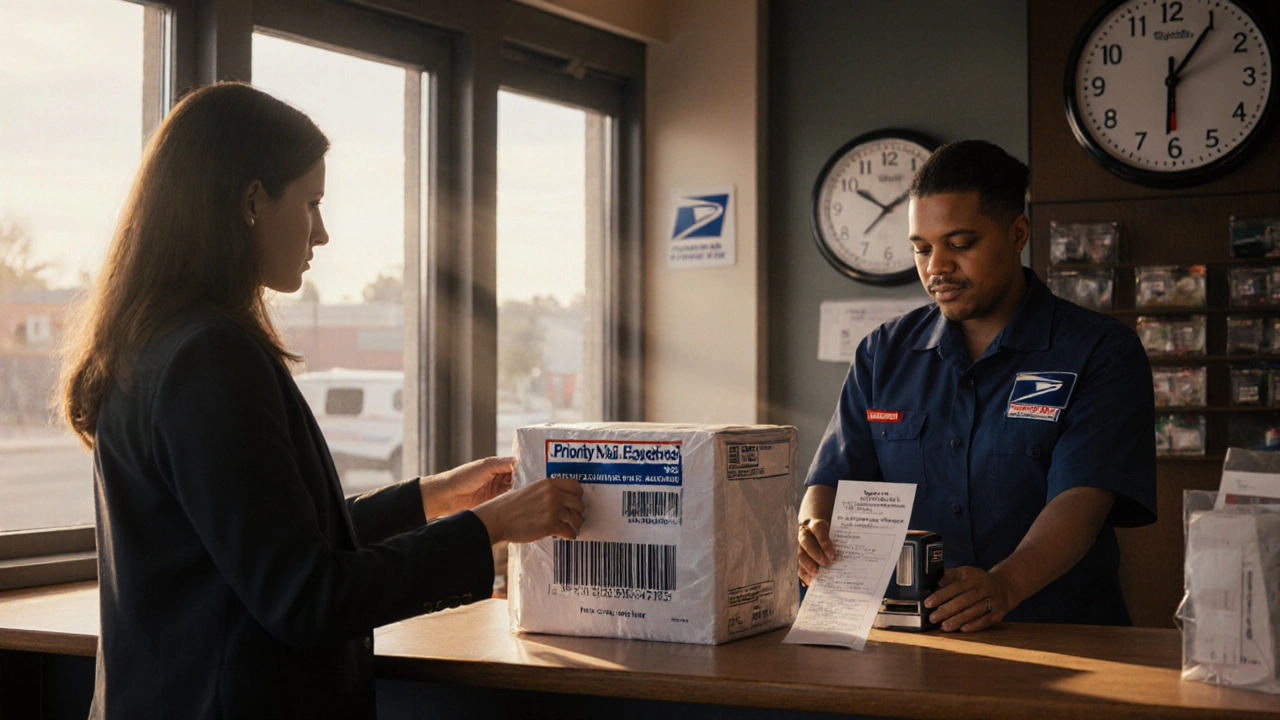Is Priority Mail Express 1‑Day Delivery Guaranteed?
Learn if USPS Priority Mail Express truly guarantees 1‑day delivery, the rules that apply, how to claim refunds, and how it compares to FedEx and UPS overnight services.
When you start evaluating express delivery, a service that guarantees parcel arrival within a short, predefined window, often 24‑48 hours, also called speedy shipping. Courier rates the price structure set by carriers based on distance, weight, and service level play a huge role in what you actually pay. At the same time, the cut‑off time the latest hour you can book a shipment and still qualify for next‑day service determines whether a package qualifies for that fast lane. Finally, delivery coverage the geographic zones a carrier serves within its express network tells you if the promised speed is even possible for your destination. Together these elements form the core of any express delivery comparison.
First, look at how courier rates are built. Most carriers add a base fee, a distance multiplier, weight brackets, and a surcharge for time‑sensitive handling. When you pull data from a few providers, you’ll notice that a $10 surcharge for “same‑day” service can swing the total cost by 30 % compared to a standard overnight option. Understanding this pricing formula helps you spot hidden fees and choose the most cost‑effective route.
Second, the cut‑off time is not the same for every carrier or every city. Some firms close their booking window at 5 PM local time, while others push it to midnight for high‑traffic corridors. If you miss that window, your package drops to the next service tier, adding hours or even a full day to delivery. Knowing the exact cut‑off for each provider lets you schedule pickups and avoid unexpected delays.
Third, delivery coverage varies widely. Large national carriers usually cover every major city and many rural areas, but niche express players might focus on metro zones only. A carrier with extensive coverage can promise a 24‑hour window across the country, whereas a specialized service might only guarantee that speed within a limited region. Matching coverage to your target market ensures you don’t promise buyers a timeline you can’t meet.
Fourth, consider the type of service—overnight shipping versus same‑day or two‑day express. Overnight options often balance cost and speed, making them a go‑to for most e‑commerce orders. Same‑day services, while pricier, are essential for urgent parts or high‑value goods. Comparing these tiers side by side reveals where you can save without sacrificing the customer experience.
Fifth, check how carriers handle peak periods. Holidays, sales events, and weather spikes can inflate rates and shrink delivery windows. Some providers publish seasonal rate tables and temporary cut‑off adjustments. Incorporating this data into your comparison lets you plan for the busiest weeks without surprise surcharges.
All of these points tie back to the core idea that an express delivery comparison is the process of evaluating speed, cost, and geographic reach across different courier services. By breaking down each factor, you can build a decision matrix that matches your budget, timeline, and customer expectations.
Below you’ll find a curated collection of articles that dive deeper into each of these topics. From the math behind logistics pricing to real‑world examples of overnight shipping options, the posts give you practical tools to benchmark carriers, calculate true costs, and choose the fastest, most reliable service for your shipments.

Learn if USPS Priority Mail Express truly guarantees 1‑day delivery, the rules that apply, how to claim refunds, and how it compares to FedEx and UPS overnight services.